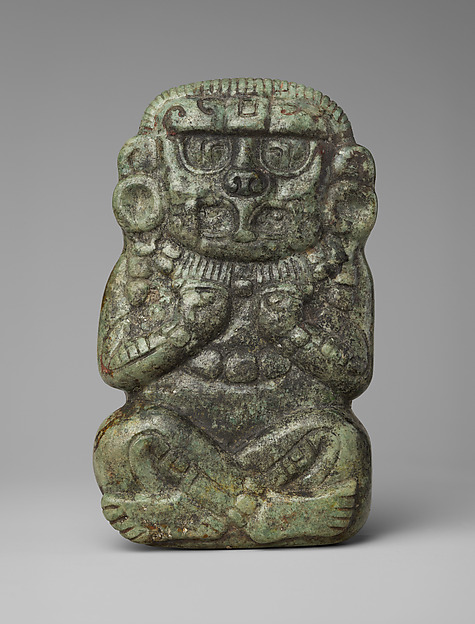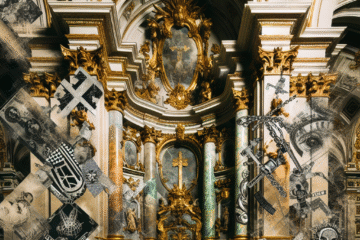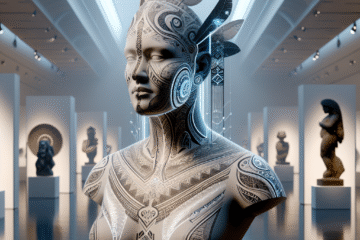
“
All children are artists. The problem is how to remain an artist once he grows up.
”
— Pablo Picasso
Mythology Rewired: How Sci-Fi Artists are Redrawing Ancient Gods
Introduction: The Fusion of Cosmos and Pantheon
From Zeus wielding a lightning bolt to Anubis guarding the underworld, mythology has long provided humanity with archetypes that explain the cosmos and human nature. But as our collective gaze turns increasingly toward space, artificial intelligence, and cybernetic environments, these ageless icons are being reimagined. Sci-fi artists, unfettered by the constraints of classical formats, are reconstructing these mythological figures with a techno-futuristic twist. In this reinvention, gods are reborn as artificial intelligences, cyborg deities, and spacefaring titans—ancient symbolism repurposed in the digital age.
1. Classical Myth in the Age of Oil and Canvas
Historically, mythology played a foundational role in Western art. From Greek vases to Renaissance frescoes, gods and goddesses populated visual narratives. Artists like Botticelli, whose “The Birth of Venus” (1486) exemplifies the era’s idealized mythological style, treated these figures as symbols of beauty, virtue, and divine order. During the Neoclassical period, painters such as Jacques-Louis David used myth to comment on Enlightenment values and political upheaval. Despite their timeless themes, these portrayals were rooted in the aesthetics and ideologies of their era—earth-bound, humanist, and generally devoid of sci-fi speculation. The ideological atmosphere emphasized moral clarity and cultural continuity rather than existential or technological transformation.
2. Modernism and the Rise of Psychological Archetypes
With the rise of modernism in the late 19th and early 20th centuries, mythology underwent a psychological shift. Artists like Gustav Klimt and Salvador Dalí began exploring mythological motifs through the lens of dream, madness, and the subconscious. Influenced by Carl Jung’s theory of archetypes and Joseph Campbell’s work on the monomyth, mythological figures were no longer gods dictating fate but rather reflections of human psychology. This opened the door for deeper reinterpretations. The otherworldly nature of deities, heroes, and monsters aligned well with explorations of internal landscapes and altered states—an important precursor to the speculative and symbolic framework employed by contemporary sci-fi illustration.
3. The Digital Turn and Sci-Fi’s Mythopoetic Mission
The late 20th century witnessed a convergence of digital technology and speculative imagination. As animation, CGI, and digital painting tools proliferated, artists could render impossible visions with hyper-realistic precision. In cinema, characters like Thor and Wonder Woman became iconic figures not only of myth but of speculative hybridization. Sci-fi illustrators such as Chris Foss and Moebius started crafting vast, surreal futurescapes populated by gods who resemble androids, biomechanical giants, or sentient planets. Technology became not just a tool but a thematic imperative: what does it mean to be divine in the age of quantum computing, genetic engineering, or space colonization?
4. Gods as Code: Cyberpunk and Digital Deification
Contemporary sci-fi art often reframes mythological figures within cyberpunk ideologies—urban dystopias where humans and machines blur. Here, gods are often rendered as rogue A.I.s, digital ghosts, or post-human entities. Zeus becomes a satellite-wielding technocrat; Athena dons a neural interface helmet and oversees knowledge networks. These reinterpretations speak to questions raised by transhumanism and post-human philosophy: can humanity evolve into its own pantheon? Artists like Android Jones utilize psychedelic digital art to depict deities as cyber-consciousnesses, fusing Hindu gods with kaleidoscopic data streams and neon-lit circuitry. This visual language critiques contemporary obsessions with surveillance, identity, and immortality in the digital cloud.
5. Beyond Earth: Myth in Cosmic Contexts
As humanity explores Mars, exoplanets, and cosmic radiation, myths take on astral dimensions. Sci-fi illustrators extrapolate ancient cosmologies into literal space voyages. Drawing from Norse, Egyptian, and Mesoamerican myths, these artists place gods among the stars—literalizing the ancient idea of the divine sky. The Ouroboros becomes a Dyson Sphere. Ra’s solar barque becomes an interstellar vessel navigating wormholes. Here, mythology is not only aesthetic but epistemological, posing timeless questions in futuristic terms: Where do we come from? What governs the universe? Are we creating gods or evolving into them? These narratives blur myth and science into an artistic space where speculation transcends time.
Conclusion: The Eternal Return of the Mythic
In reimagining ancient deities through sci-fi art, contemporary illustrators are not abandoning tradition—they are reinvigorating it. Their works traverse time, blending the metaphysical with the mechanical, the sacred with the speculative. These art pieces speak profoundly to our modern condition, wherein ancient symbols are no longer bound to marble and pigment but live as digital specters in the realm of augmented reality and machine learning. The gods have not vanished; they have uploaded themselves and await us in the future, waiting to be discovered anew.

Image description:
The advent of cyberspace has created a new, unregulated dimension of warfare, which the North Atlantic Treaty Organization (NATO) has striven to manage. This thesis raises the following question: To what extent is NATO cybernetically, politically, militarily, and economically prepared to respond to a major act of cyberwar against one or more of its members? The thesis evaluates NATO’s level of preparedness across seven areas: cyber strategy, cyber cooperation, decision making, political will, crisis management, defense spending, and defense policy prioritization. The thesis concludes that NATO is moderately prepared to respond effectively to a major act of cyberwar launched against one or more of the Allies. NATO’s implementation of its cyber policies and cooperative partnerships probably make it cybernetically prepared to address major acts of cyberwar; however, challenges with decision making, public support, crisis management, defense spending, and defense policies could make NATO less than optimally effective in responding with force to acts of cyber aggression that rise to the level of a conventional armed attack. The thesis recommends that NATO enhance its efforts in cyber strategy development, cyber cooperation, decisional delegation, strategic messaging, and defense spending to address challenges resulting from the evolving complexity and heterogeneity of cyber incidents.
Subjects: North Atlantic Treaty Organization; NATO; Washington Treaty; North Atlantic Treaty; Article 5; collective defense; consensus; cyber; cyber attack; cyberwar; cybersecurity; hybrid; cyber readiness; conventional armed attack; kinetic attack; Wales Summit; Warsaw Summit
License:
Public domain
Source:
Wikimedia Commons
Useful links:


